How to install Arangodb in Ubuntu
To install Arangodb in Ubuntu 16.04
Arango database is a multi-model database system. It uses the combination of Key-Value pairs, documents, graphs to store data and has a flexible data model for documentation and graphs. Installation and usage of ArangoDB v3.0.2 on Ubuntu 16.04 is explained in this manual.
To install arango
Utilise the following command to download arango key file.
root@linuxhelp:~# wget https://www.arangodb.com/repositories/arangodb3/xUbuntu_16.04/Release.key
--2016-07-27 14:38:37-- https://www.arangodb.com/repositories/arangodb3/xUbuntu_16.04/Release.key
Resolving www.arangodb.com (www.arangodb.com)... 85.214.140.94
Connecting to www.arangodb.com (www.arangodb.com)|85.214.140.94|:443... connected.
HTTP request sent, awaiting response... 200 OK
Length: 1003 [application/pgp-keys]
Saving to: ‘ Release.key’
Release.key 100%[==============================> ] 1003 --.-KB/s in 0s
2016-07-27 14:38:38 (22.3 MB/s) - ‘ Release.key’ saved [1003/1003]
Append the key file by using the following command.
root@linuxhelp:~# apt-key add Release.key
OK
Install the " software-properties-common” with the help of apt command.
root@linuxhelp:~# apt install software-properties-common
Reading package lists... Done
Building dependency tree
Reading state information... Done
The following packages were automatically installed and are no longer required:
linux-headers-4.4.0-21 linux-headers-4.4.0-21-generic linux-image-4.4.0-21-generic
linux-image-extra-4.4.0-21-generic
Use ' sudo apt autoremove' to remove them.
The following additional packages will be installed:
python3-software-properties software-properties-gtk
The following packages will be upgraded:
python3-software-properties software-properties-common software-properties-gtk
3 upgraded, 0 newly installed, 0 to remove and 280 not upgraded.
.
.
.
Processing triggers for shared-mime-info (1.5-2) ...
Processing triggers for hicolor-icon-theme (0.15-0ubuntu1) ...
Setting up python3-software-properties (0.96.20.2) ...
Setting up software-properties-common (0.96.20.2) ...
Setting up software-properties-gtk (0.96.20.2) ...
Use the following command to add the repository.
root@linuxhelp:~# apt-add-repository ' deb https://www.arangodb.com/repositories/arangodb3/xUbuntu_16.04/ /'
Then update the system by using the following command.
root@linuxhelp:~# apt-get update
Get:1 http://security.ubuntu.com/ubuntu xenial-security InRelease [94.5 kB]
Hit:2 http://ppa.launchpad.net/enlightenment-git/ppa/ubuntu xenial InRelease
Hit:3 http://in.archive.ubuntu.com/ubuntu xenial InRelease
Hit:4 http://ppa.launchpad.net/gns3/ppa/ubuntu xenial InRelease
Hit:5 http://in.archive.ubuntu.com/ubuntu xenial-updates InRelease
Hit:6 http://in.archive.ubuntu.com/ubuntu xenial-backports InRelease
Ign:7 https://www.arangodb.com/repositories/arangodb3/xUbuntu_16.04 InRelease
Hit:8 https://www.arangodb.com/repositories/arangodb3/xUbuntu_16.04 Release
Fetched 94.5 kB in 1s (51.2 kB/s)
Reading package lists... Done
W: https://www.arangodb.com/repositories/arangodb3/xUbuntu_16.04/Release.gpg: Signature by key 4497DA50FBD0158CCFD1996CEE611E131C42E360 uses weak digest algorithm (SHA1)
Run the following command to install arangodb.
root@linuxhelp:~# apt-get install arangodb3
Reading package lists... Done
Building dependency tree
Reading state information... Done
The following packages were automatically installed and are no longer required:
linux-headers-4.4.0-21 linux-headers-4.4.0-21-generic linux-image-4.4.0-21-generic
linux-image-extra-4.4.0-21-generic
Use ' sudo apt autoremove' to remove them.
The following NEW packages will be installed:
arangodb3
.
.
.
Processing triggers for systemd (229-4ubuntu4) ...
Processing triggers for man-db (2.7.5-1) ...
Setting up arangodb3 (3.0.3) ...
Database files are up-to-date.
Processing triggers for ureadahead (0.100.0-19) ...
Processing triggers for systemd (229-4ubuntu4) ...
Set the root password for the database.
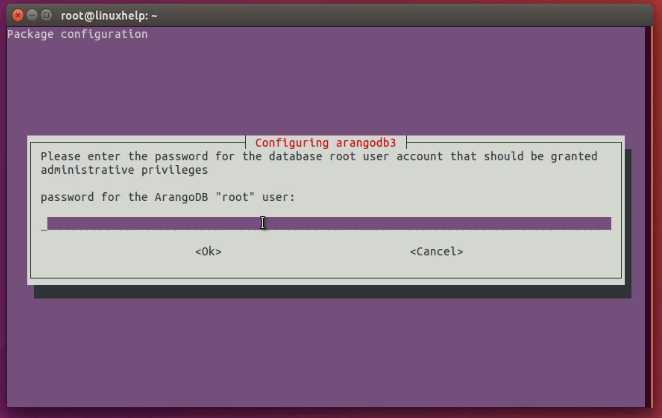

Check the status of the arangodb by using the following command.
root@linuxhelp:~# service arangodb status
arangodb3.service - LSB: arangodb
Loaded: loaded (/etc/init.d/arangodb3 bad vendor preset: enabled)
Active: active (running) since Wed 2016-07-27 14:56:48 IST 1min 59s ago
Docs: man:systemd-sysv-generator(8)
CGroup: /system.slice/arangodb3.service
??40206 /usr/sbin/arangod --uid arangodb --gid arangodb --pid-file /var/run/arangodb
??40207 /usr/sbin/arangod --uid arangodb --gid arangodb --pid-file /var/run/arangodb
Jul 27 14:56:45 linuxhelp systemd[1]: Starting LSB: arangodb...
Jul 27 14:56:45 linuxhelp arangodb3[40162]: * Starting arango database server arangod
Jul 27 14:56:48 linuxhelp arangodb3[40162]: {startup} starting up in daemon mode
Jul 27 14:56:48 linuxhelp arangodb3[40162]: ...done.
Jul 27 14:56:48 linuxhelp systemd[1]: Started LSB: arangodb.
Jul 27 14:56:48 linuxhelp arangodb3[40162]: changed working directory for child process to ' /va
lines 1-14/14 (END)
To Launch arangodb
To launch Arangodb, run arangosh command.
root@linuxhelp:~# arangosh
Please specify a password:
_
__ _ _ __ __ _ _ __ __ _ ___ ___| |__
/ _` | ' __/ _` | ' _ / _` |/ _ / __| ' _
| (_| | | | (_| | | | | (_| | (_) \__ | | |
\__,_|_| \__,_|_| |_|\__, |\___/|___/_| |_|
|___/
arangosh (ArangoDB 3.0.3 [linux] 64bit, using VPack 0.1.30, ICU 54.1, V8 5.0.71.39, OpenSSL 1.0.2g-fips 1 Mar 2016)
Copyright (c) ArangoDB GmbH
Pretty printing values.
Connected to ArangoDB ' http+tcp://127.0.0.1:8529' version: 3.0.3 [server], database: ' _system' , username: ' root'
Type ' tutorial' for a tutorial or ' help' to see common examples
127.0.0.1:8529@_system>
Open the browser and call http://localhost:8529
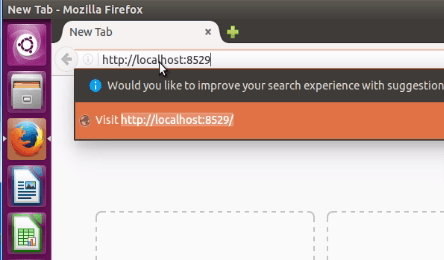
Login to ArangoDB using the user credentials.

Click Select db_ system to proceed further.

The home page of ArangoDB appears as follows.
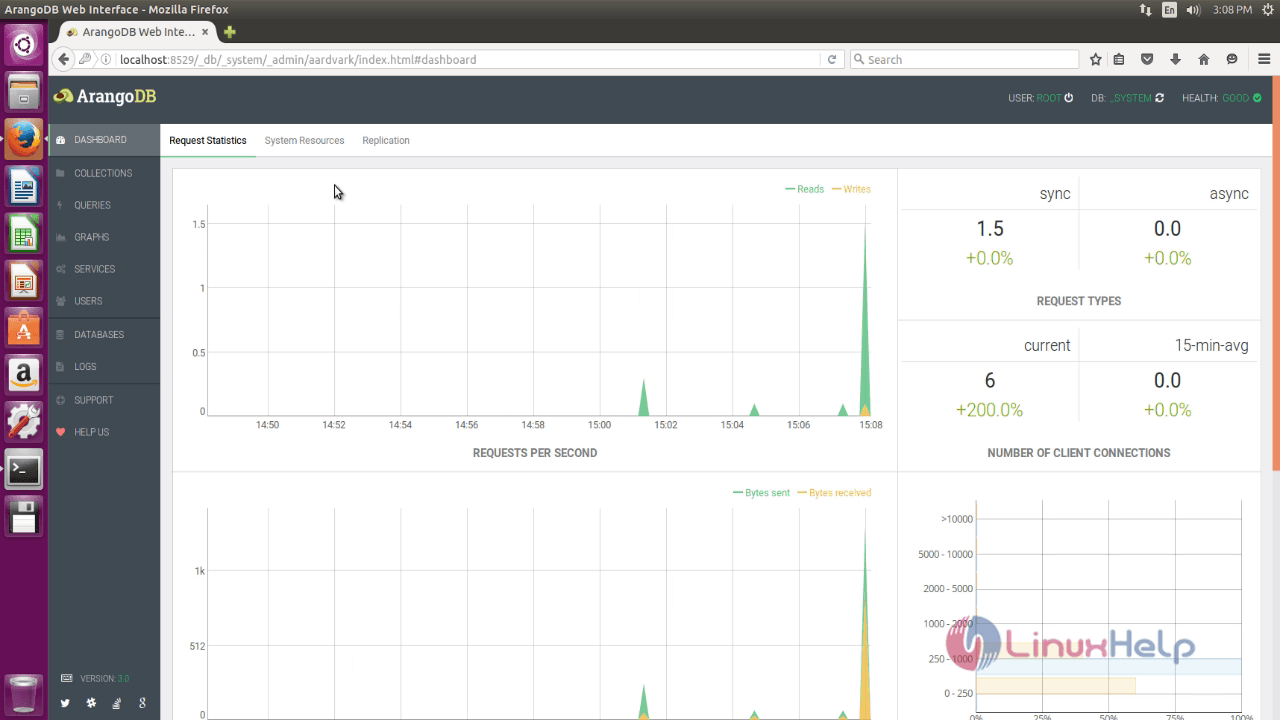
Select dashboard interface to know about Request statistics, System Resources and Replication. Click System Resources tab to monitor the system status.

To view or to add folders click collections.

To query the datas, click query.
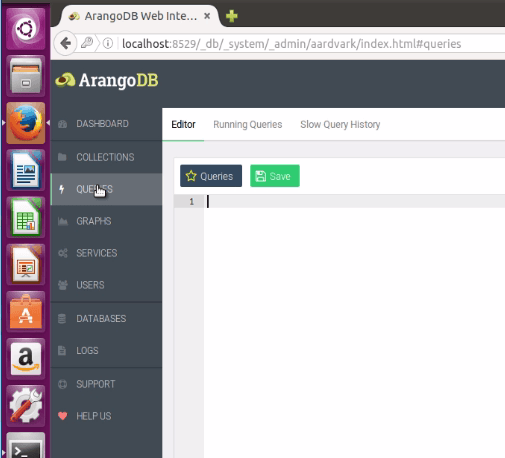
To view the graphical representation of your database, click graphs.

Click services, to add new services.
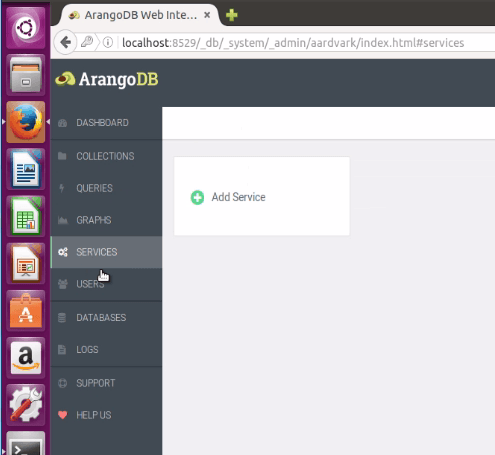
To add a new user, click user.
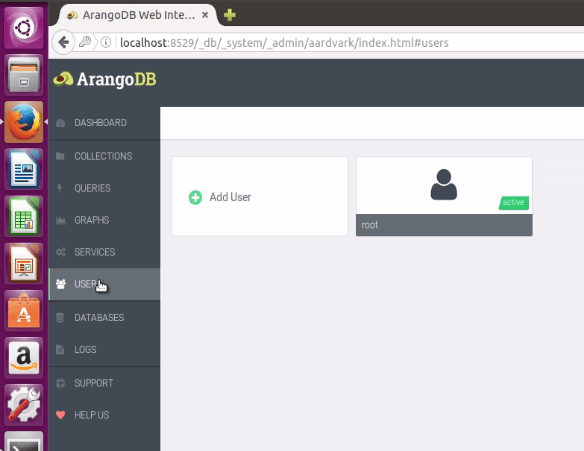
Click databases tab to add or create databases.

To view the Logs, click logs.

Comments ( 0 )
No comments available